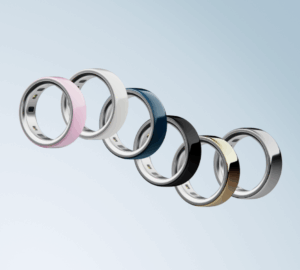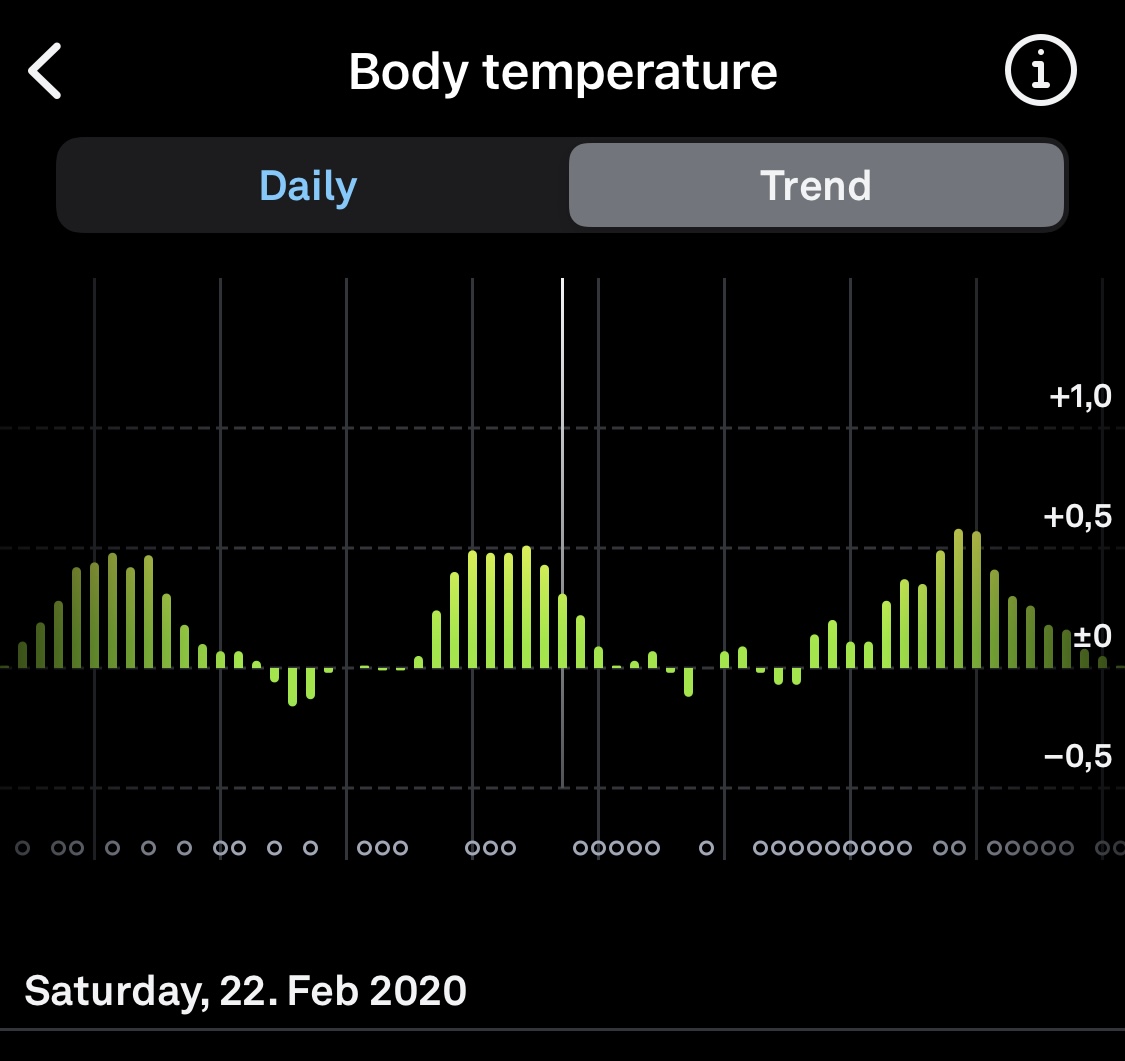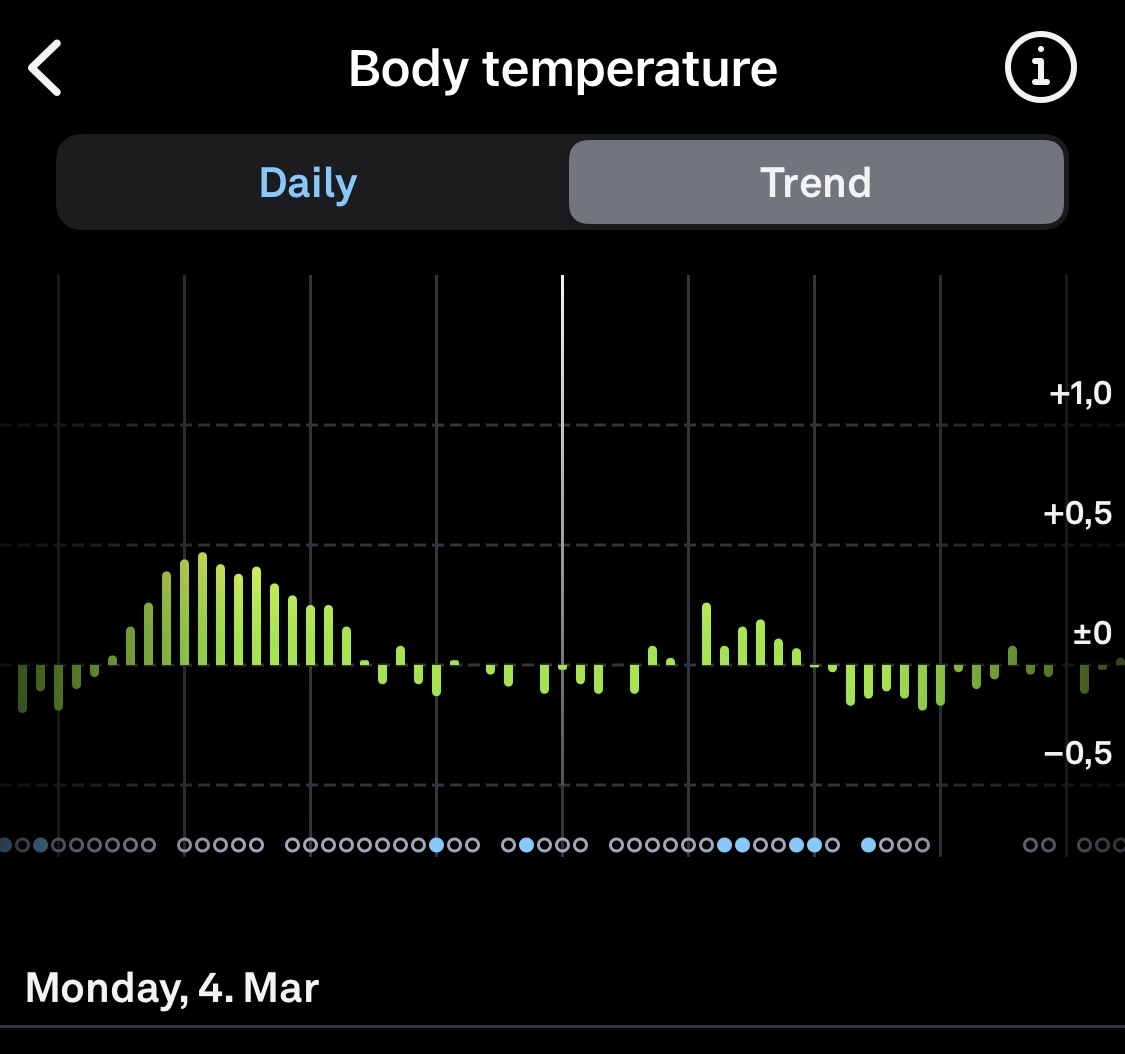Who: Saša M., 45, Germany
Surprising Oura insight: As Saša goes through perimenopause, she uses her Oura data with her doctor’s guidance to interpret whether she has ovulated based on her temperature trends. If she hasn’t, she takes progesterone as part of her hormone replacement therapy.
What led you to Oura?
I’m into biohacking, so I had wanted to buy an Oura Ring for a long time. I have always had a unique sleeping pattern, which has affected my life for as long as I can remember. I was never like my peers at school who could wake up early. Even now, at 45, my natural sleep schedule is from 1am to 9am. I wanted to better understand this and understand why I was always feeling tired.
READ MORE: Why Do I Wake Up Tired? How to Feel More Alert in the Morning
What have you learned about yourself since using Oura?
Thanks to Oura’s chronotype and body clock feature, I wasn’t surprised to discover I had an evening chronotype. But I was surprised to see that when I wake up earlier than I need to, I don’t get enough REM sleep, which negatively affects my mood.
Luckily, this discovery coincided with the pandemic, so I was able to sleep in longer because I wasn’t going to the office. I saw how beneficial it was for my Oura Sleep and Readiness Scores, and I felt noticeably better mentally and physically. I also noticed that getting enough REM sleep helps me function better emotionally, which is particularly useful because I’m going through perimenopause.
After the pandemic, armed with my Oura data, I made changes to my routine to prioritize my sleep. I moved closer to my work (only a five-minute walk away!) so I could wake up later. Now even my boss knows not to schedule meetings with me before 9:30am!
In the evenings, I avoid screen time, do red light therapy, and enjoy cuddles with my partner to help me physically relax. I also experimented with my alcohol consumption. If I decide to drink, I’ll do so earlier in the evening.
How do you use Oura during perimenopause?
When I started perimenopause about two years ago, I suddenly started experiencing bloating and ovulation pain, as well as shorter cycles and heavy periods. Using Oura’s Cycle Insights and my doctor’s guidance, I learned that I could monitor how my body was responding to hormone replacement therapy by tracking my body temperature trends.
For instance, last month, there was no temperature rise (which happens after ovulation), and two days later, I started getting estrogen-dominance symptoms.
With the recommendation of my doctor, I took bioidentical progesterone, which I had been prescribed. I was then able to spot the same temperature rise on Oura and physical symptoms as when I ovulate and move into my luteal phase. Having access to this information about my body makes me feel empowered.
Above: Saša’s regular menstrual cycle prior to perimenopause (left); an anovulatory cycle during perimenopause (right)
RELATED: How Does Menopause Affect Sleep?
What’s Your Oura Story?
Everyone’s story is unique, and we’d love to hear yours. Share your story here.












